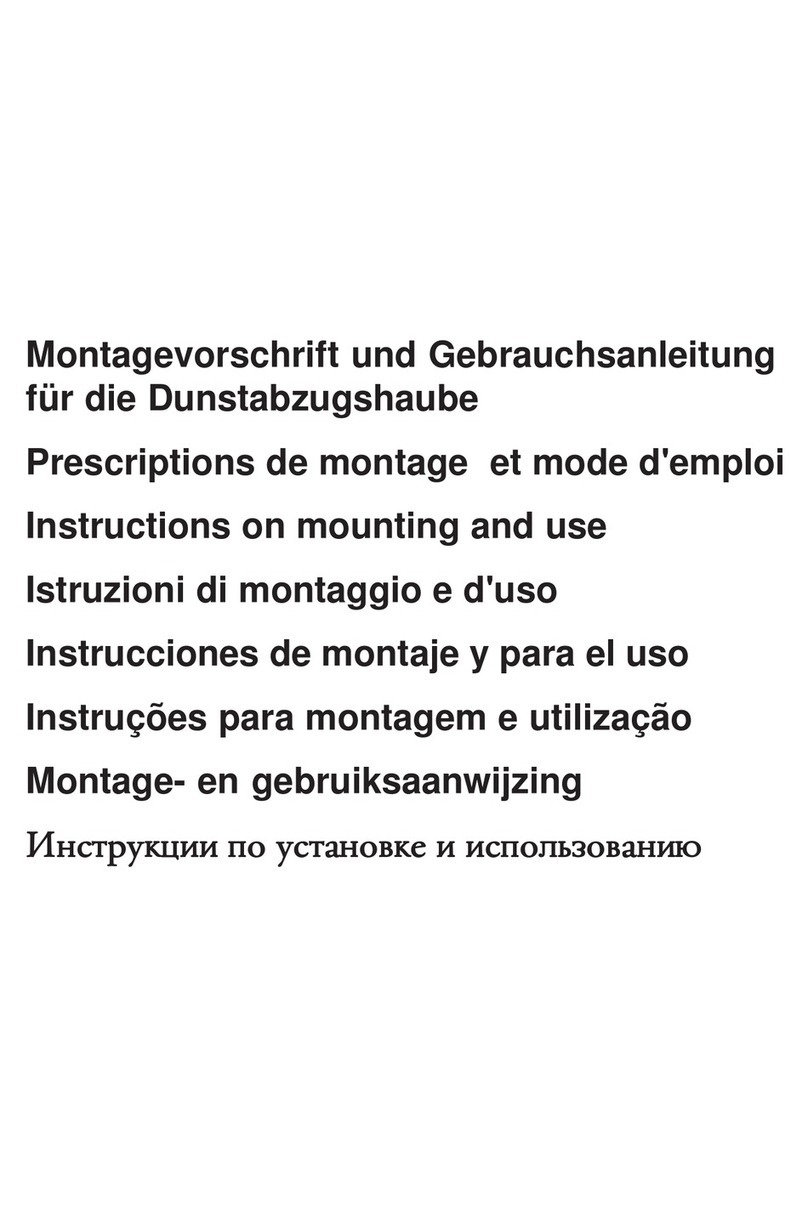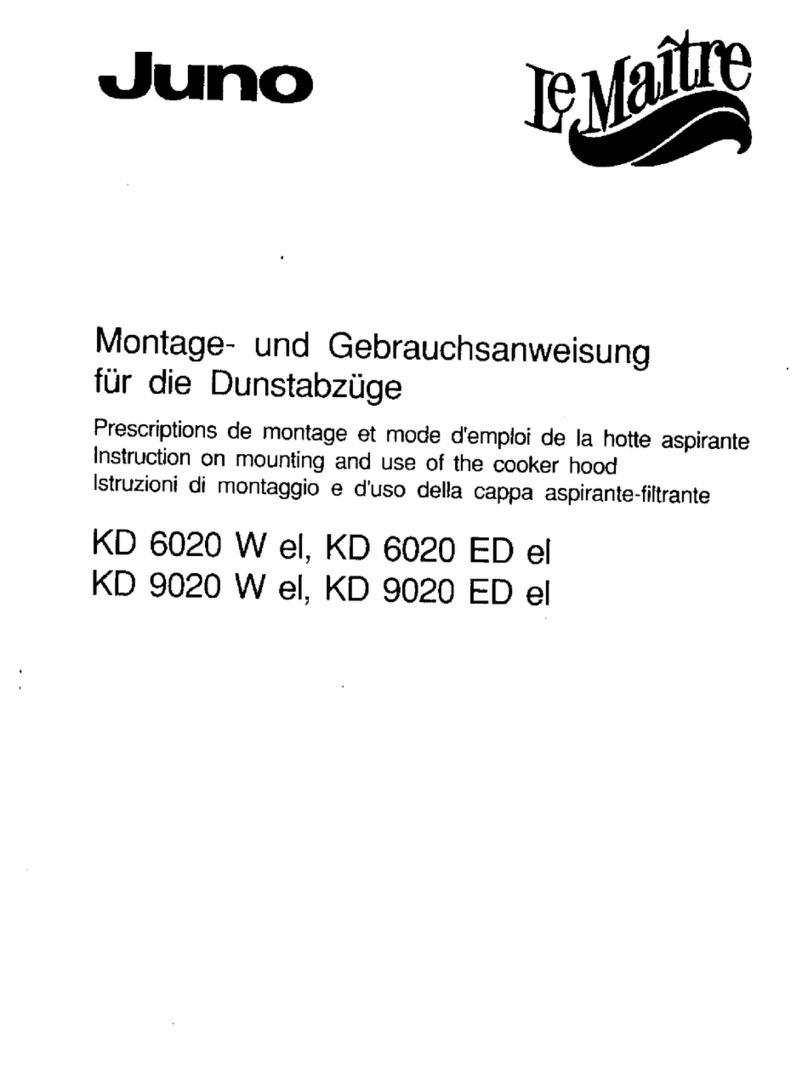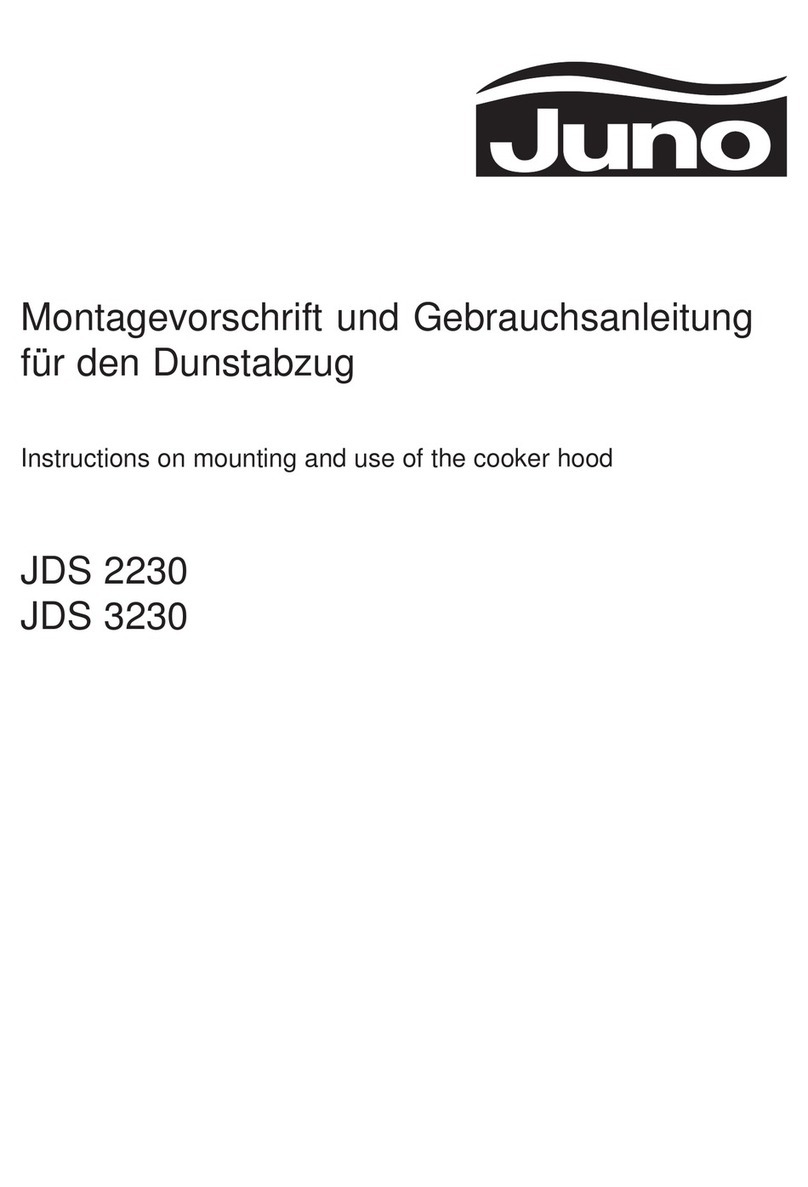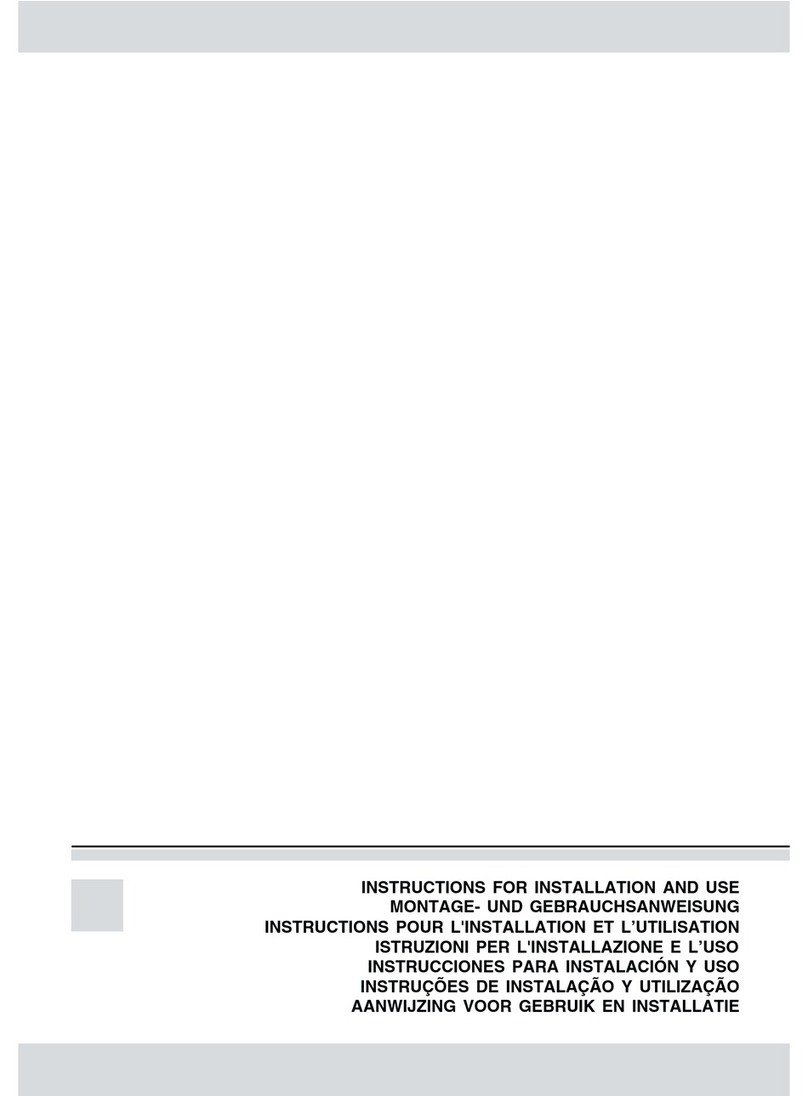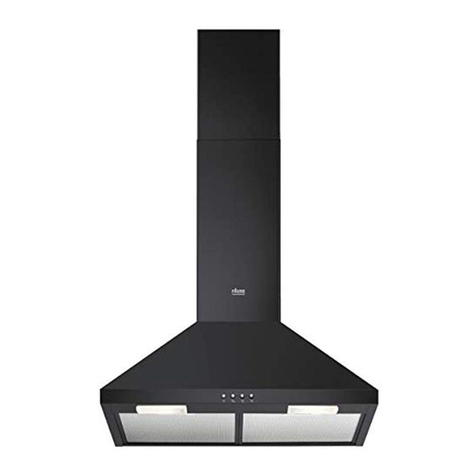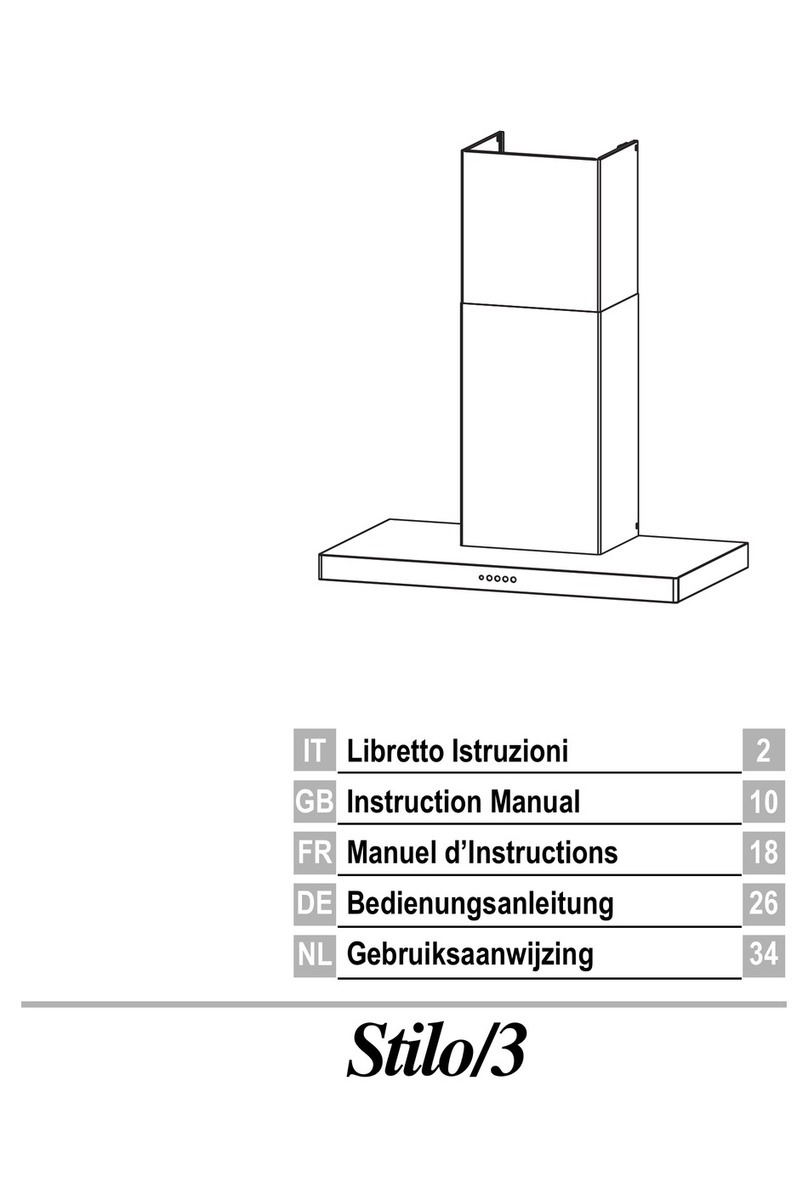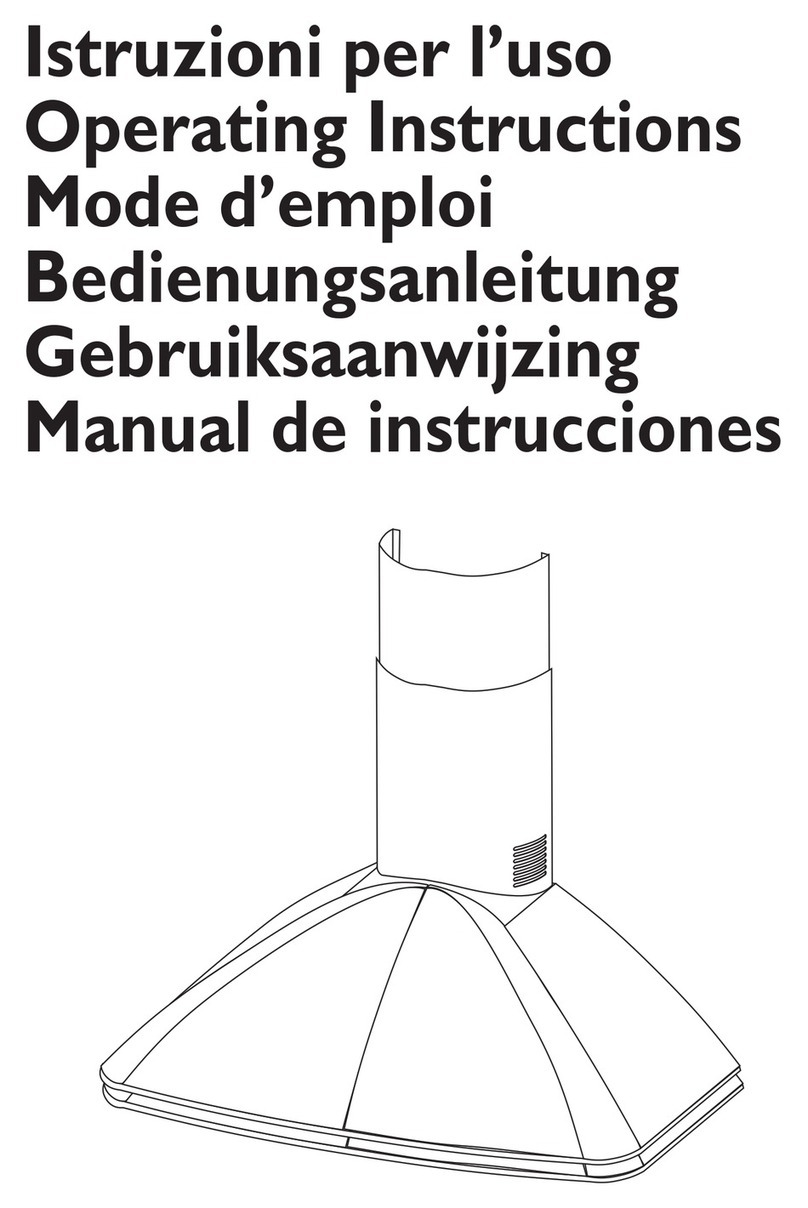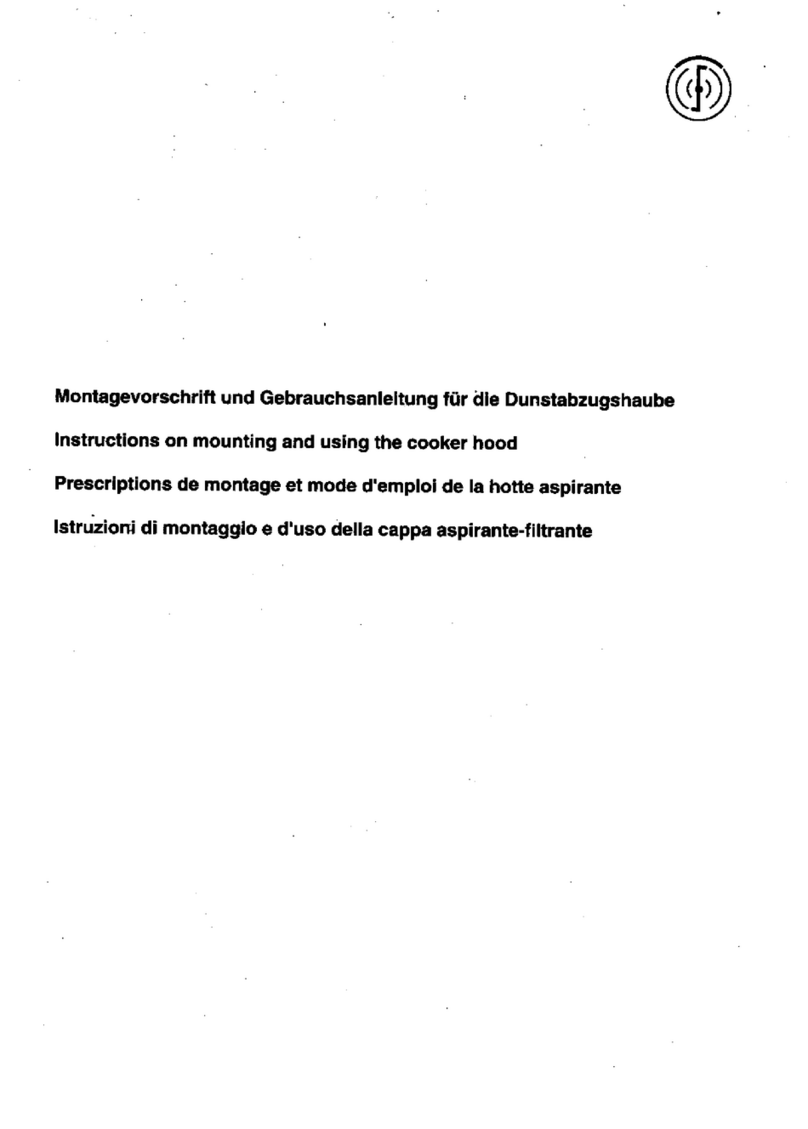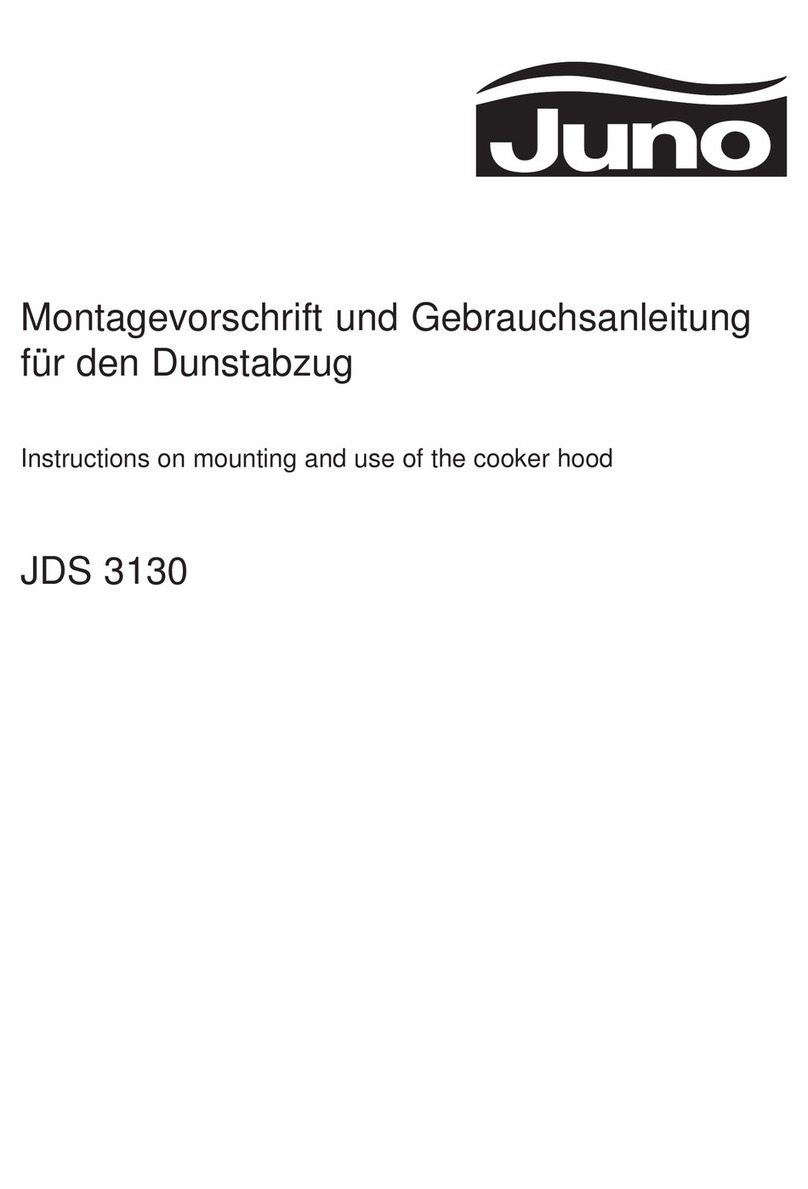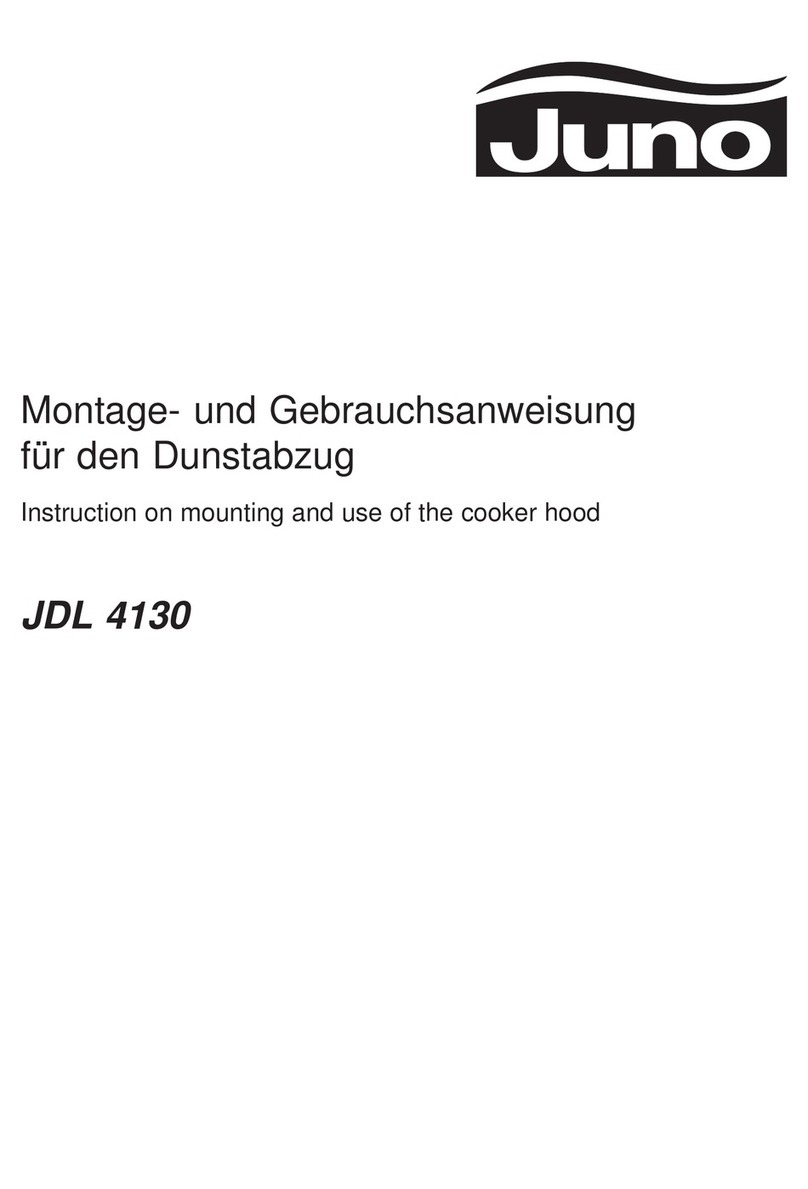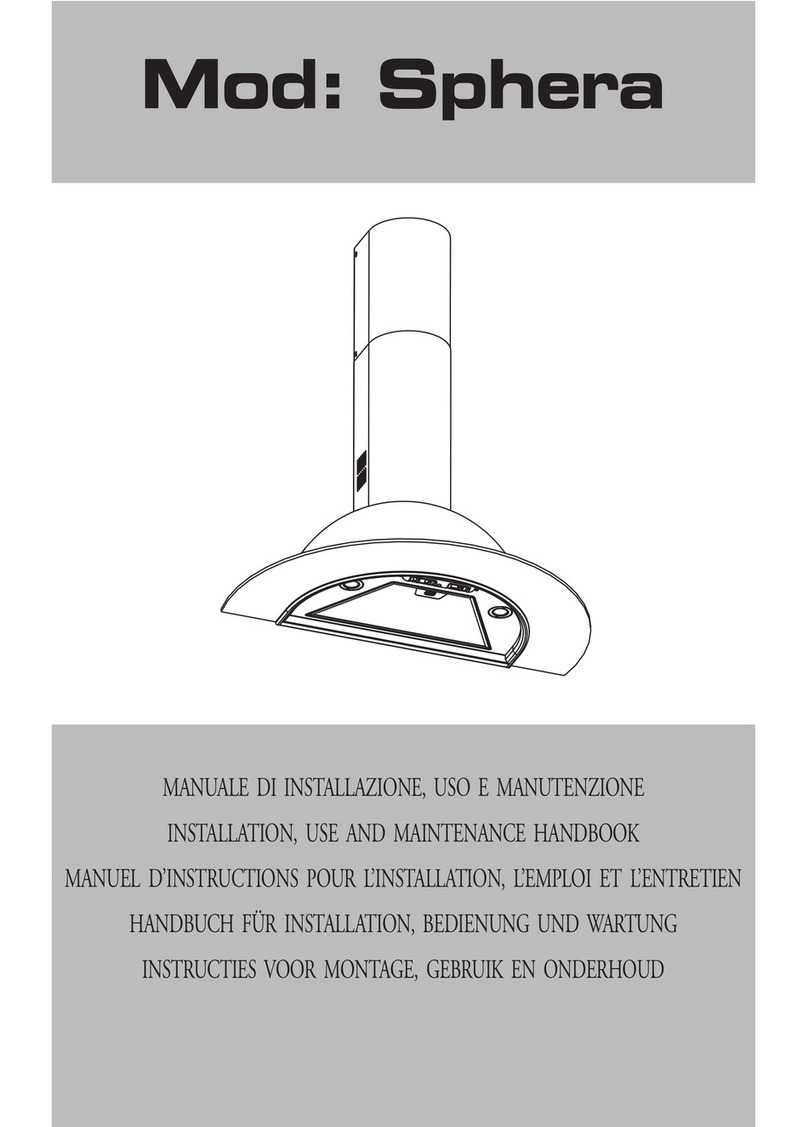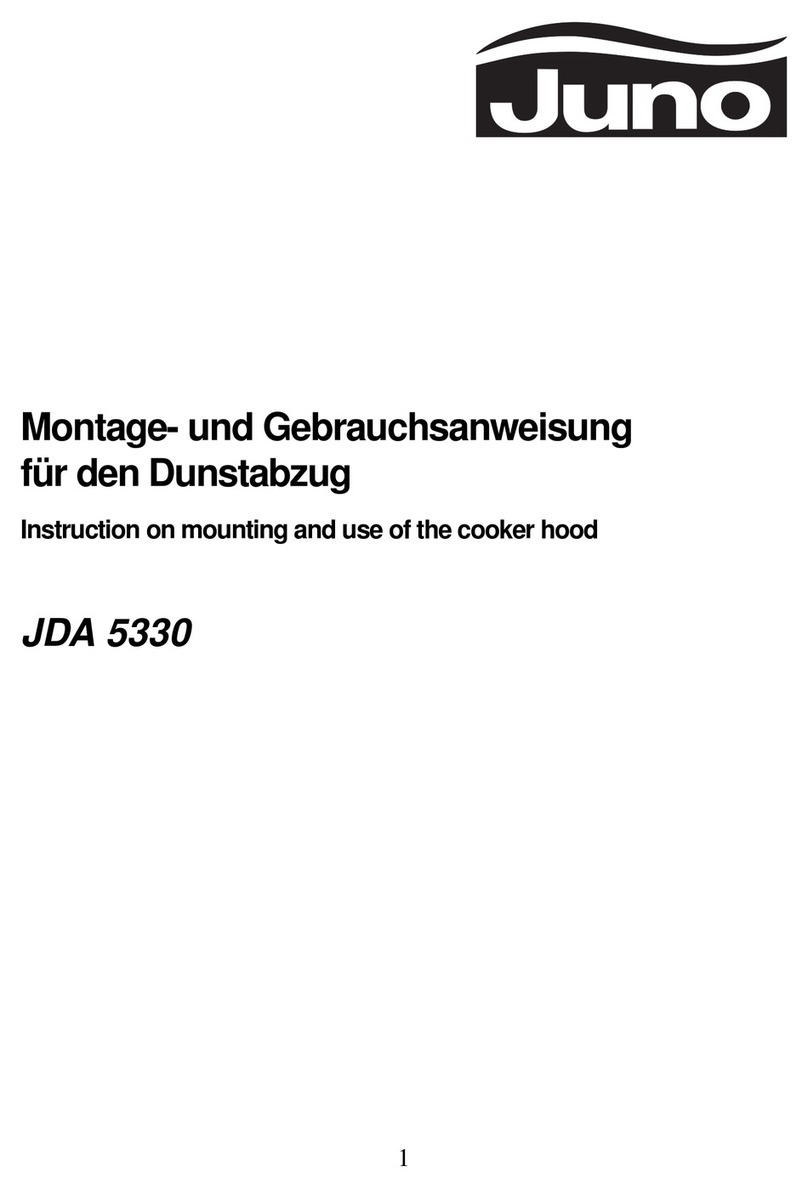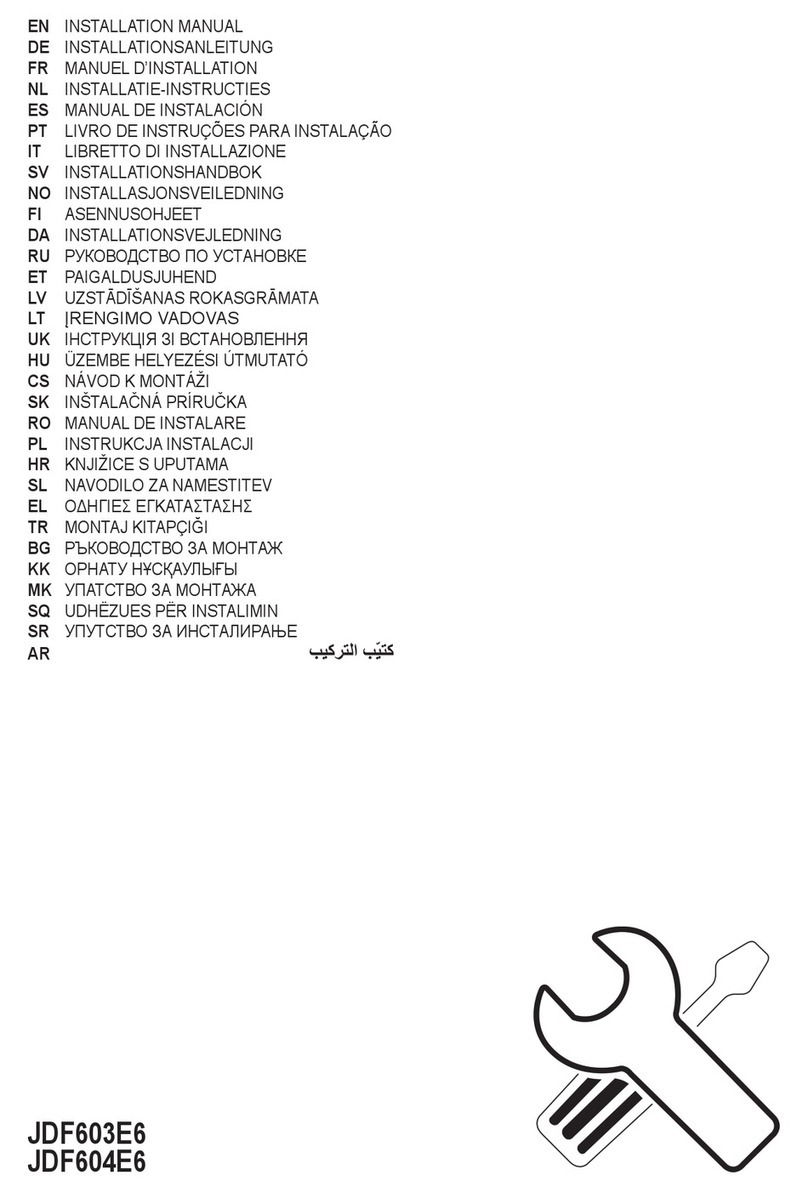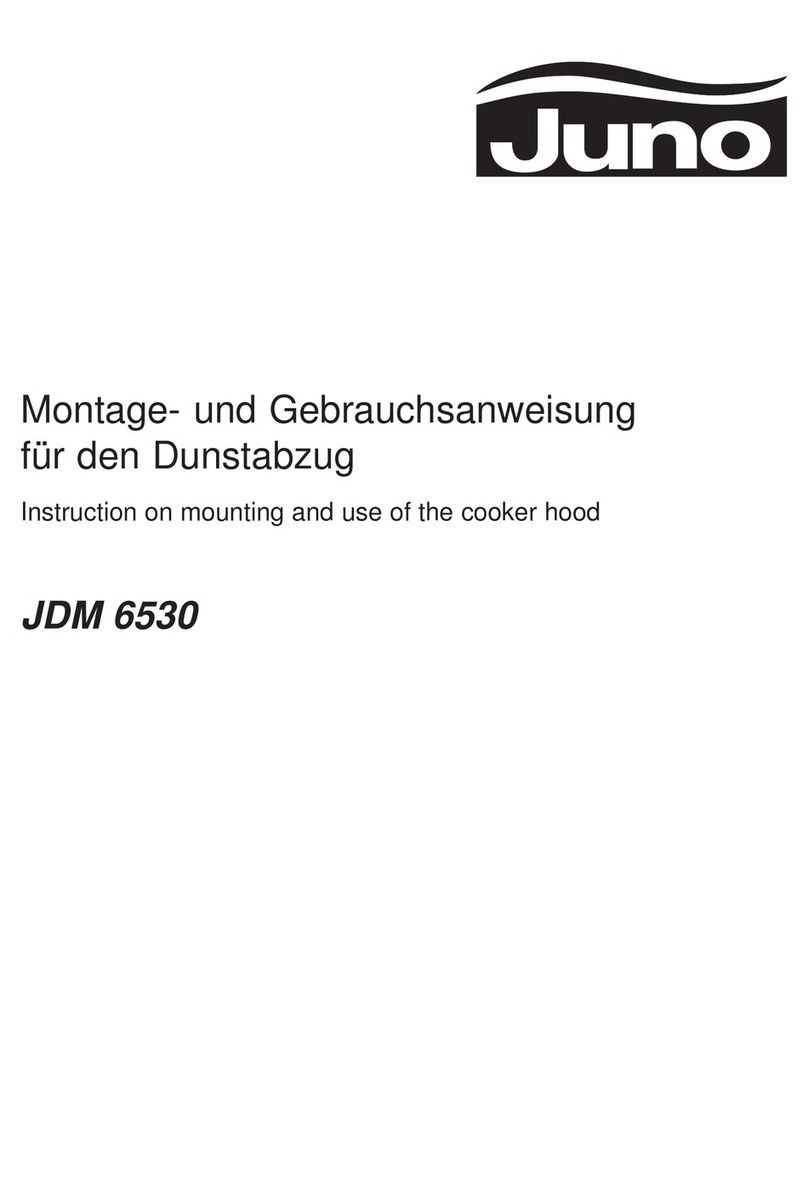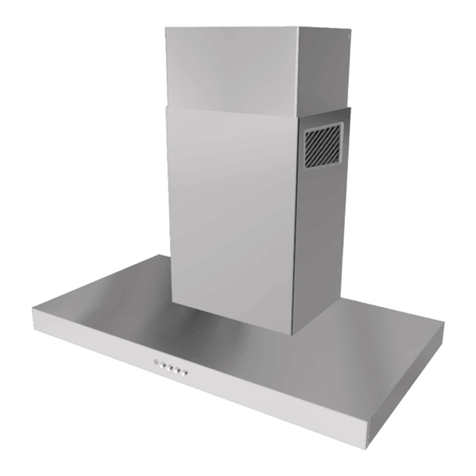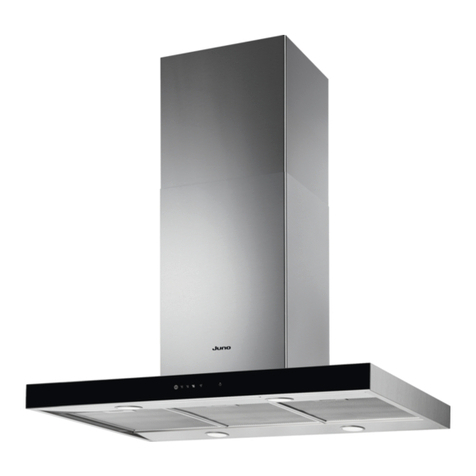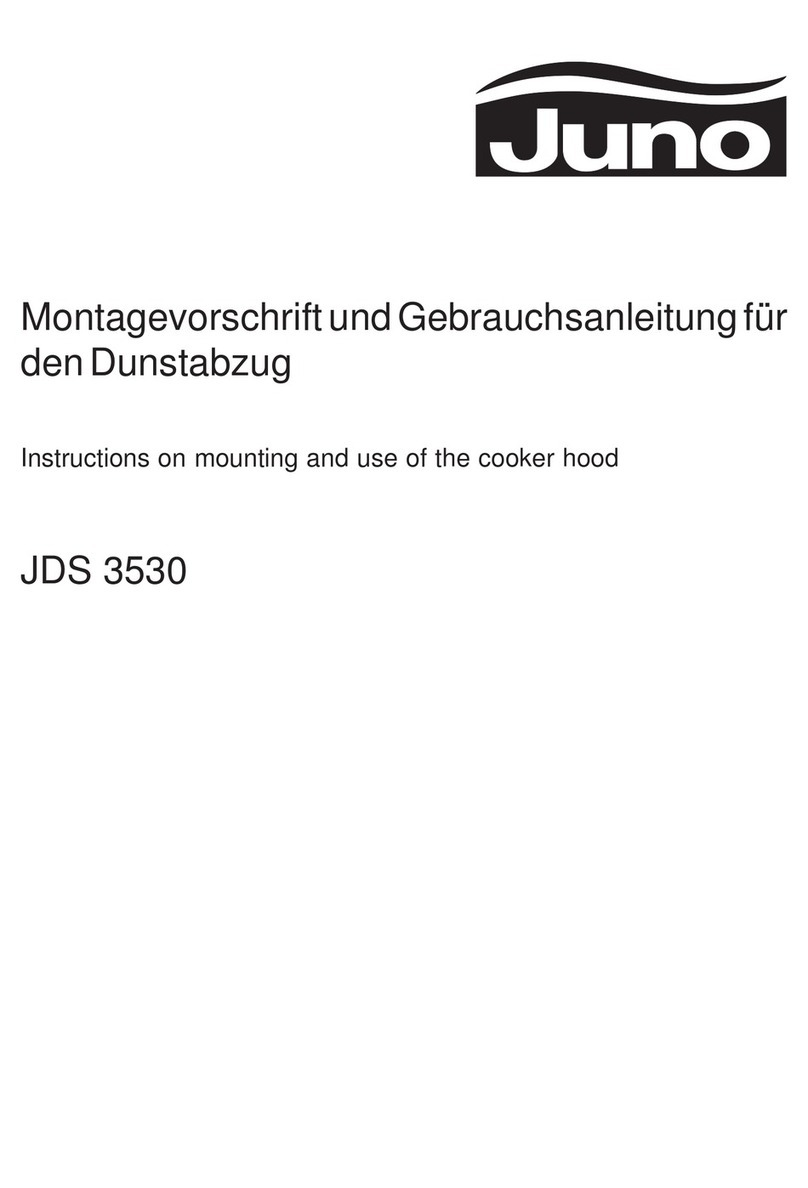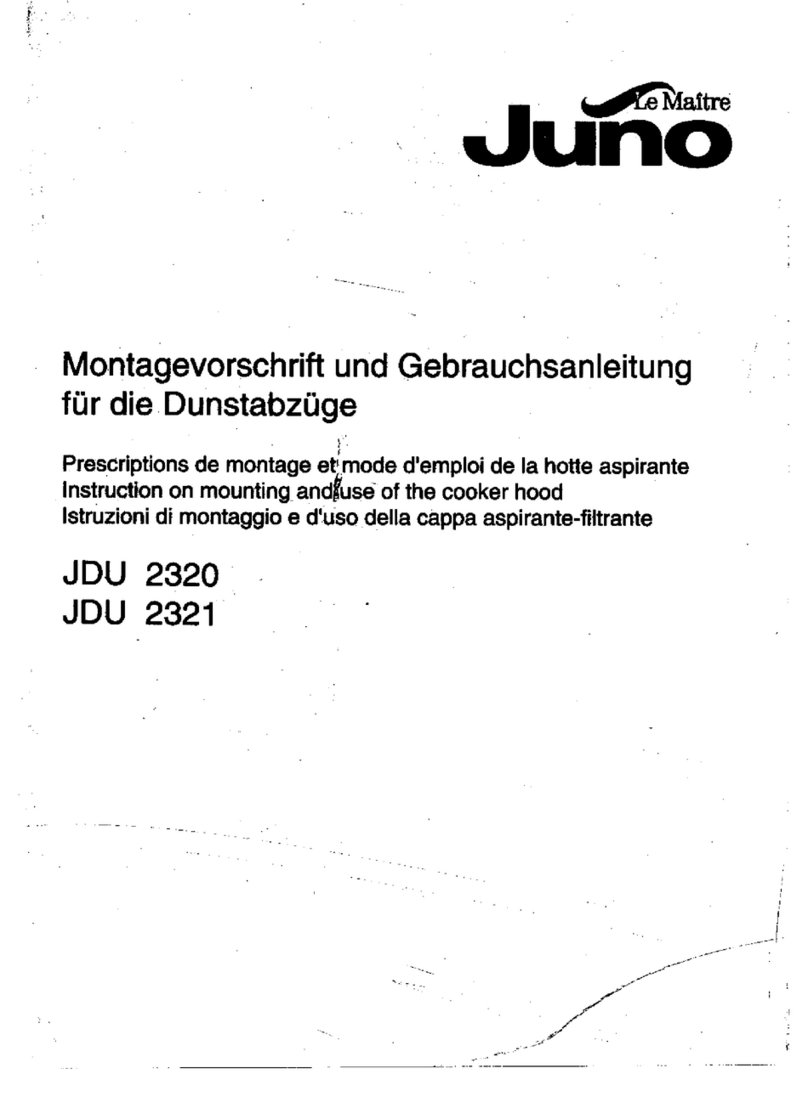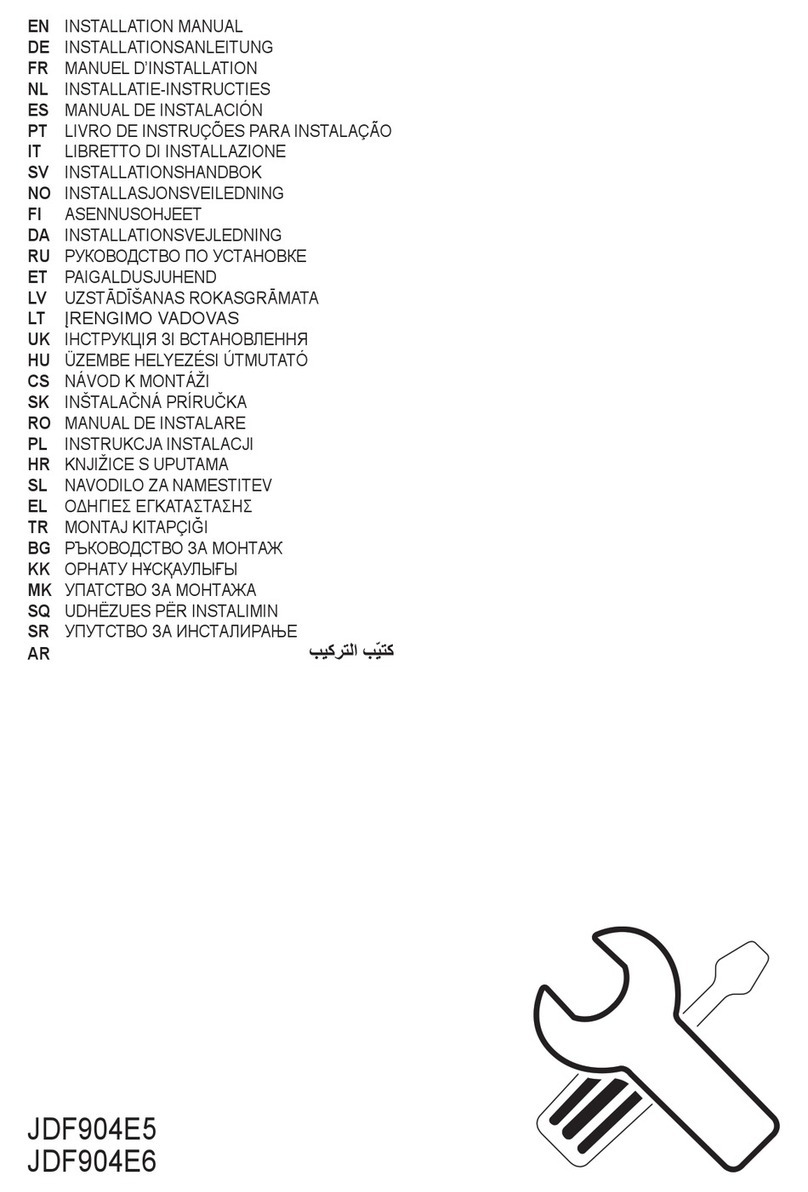View of the hood
1) Flap
2) Grease filter supporting grill
3) Cooking surface lighting
4) Motor speed
5) Light
Using the hood
The hood can be used as follows:
External exhausting version
Inthiscasethefumesareconveyedoutside
by means of a special pipe connected with
the coupling flange A, placed in the hole B
(fig. 1).
Choosing the exhausting pipe
ThecouplingringBhasadiameterof120mm.
We suggest to use Ø 120 mm exhausting
pipe.
According to your installation the pipe can
be directed either towards the ceiling or
towards the walls (fig. 2).
Using the multi-connector C, Ø100, Ø110
and Ø125 mm exhausting pipes can be
used.
Ø 120 mm exhausting pipe: the multi-
connector has not to be fitted.
Ø 125 mm exhausting pipe: insert the
multi-connector on the coupling ring and
remove, using a proper tool, the upper
unused Ø 100 and Ø 110 mm rings of the
multi-connector.
Ø 110 mm exhausting pipe: same
procedure,but removing theØ 100 mmring
only.
Ø 100 mm exhausting pipe: apply the
multi-connector on the coupling ring.
Internal recycle version
—Theairispurifiedthroughanactivecarbon
filter and returned to the room.
—The use of an active carbon filter is
necessary when an exhaust pipe to the
exterior is not available, or when it is not
possible to install this type of pipe.
In the case of the internal recycle version
proceed as follows:
a)Requestanactivecarbonfiltersuitablefor
this model from your supplier.
b)RemovethegrillEturningthelocksDand
pull it out downwards (fig. 3).
c) To install the filter, fit it in the seat first
upper then lower with the two hooks G
(fig. 4).
d) Re-insert the inlet grill
e) The deflector (fig. 5) must be fitted on the
hole B(fig. 1) fixing it with the screw
provided.
The deflector conveys the air frontwards
avoiding to dirty the rear wall.
Installation
The hood must be installed at least 65 cm
from the hob of electric cookers and at least
75 cm from the hob in the case of gas or
mixed cookers.
Warning!
— If the hood is run at the same time as a
burnerorfireplacethatdependonambient
air(forexamplegas,Diesel,coalorwood
heaters, water heaters, etc.) be careful,
because the hood, when it exhausts the
air, removes the ambient air required by
the burner or fireplace for combustion.
— For secure operation and to prevent
discharged gas from coming back in, the
vacuum must not exceed 0,04 mbr.
This may be done by making sure the air
inlet into the room passes through non-
closing openings such as air recycling
wall boxes, doors, windows or with other
technical measures.
— No food must be cooked flambé
underneath the hood.
The use of an unprotected flame is
dangerousfor the filtersand could cause
fires.
14 15
Fixing the hood
Mounting the hood on the wall
Make use of the scheme N1 provided,
applying it on the wall.
Drill where indicated (fig. 9).
PlacethehooksLprovidedwithscrewsand
blocks in the upper holes.
Place the expansion plugs Msupplied with
the hood in the lower holes (fig. 10).
Fix the angle frame N(using either the long
or the short arm, depending on the depth of
the side cupboards) to the wall at the right
height.
Adjustthepositionoftheupper brackets
O, fix the hood to the hooks L, check
that the hood is at the right height (to
eventuallyadjust the height work onthe
screws P, fig. 11).
Fix the hood to the lower angle frame by
means of the screws Q.
ForafurtheradjustmentactonthescrewsR
through the holes S(fig. 11).
Fixing the front panel
Take off the door H(fig. 6) turning the
rear locking knobs K.
Apply the scheme N3 onthe rear sideof
the front panel, considering that the
arrow indicates the upper side (fig. 7),
drill where indicated by the scheme.
Thenfixthedoortothefrontpanelbymeans
of the screws N(fig. 8).
Fixing the hood to the cupboards
Apply the scheme N2 on the side of the
right cupboard, so that the side B
matches the front part of the cupboard
(disregardthethickness of the flap)and
drill two holes 2,5 mm diameter in the
points B1 and B2 (fig. 12).
Then apply the same scheme on the side of
the left cupboard, matching the side Cwith
the front part of the cupboard (disregard the
thickness of the flap).
Drilltwoholes2,5mmdiameterinthepoints
C1 and C2 (fig. 13).
Fix the hood to the cupboards by means of
the screws T(fig. 14).
Therefore,neveruseanopenflameunder
thehood.When fryingfoods,neverleave
the pan alone because the cooking oil
could flare up.
— The hood must not be connected to fuel
exhaust flues (boilers, heating systems,
water heaters, etc.).
— Please, keep to the provisions of official
directivesregardingthequestionoffume
discharge.
— The manufacturers refuse to accept any
responsibility for damage to the hood or
its catching on fire because of failure to
observe the above instructions.
Suggestions for the installation and
use of the hood
— The horizontal sections of the pipe must
be slanted slightly upwards (about 10%)
toensureaneasyflowoftheairoutwards.
— The best performance of the unit is
obtained in the external exhaust model
(suction), therefore in the limits of the
possibilitiesitisadvisedtousetheexternal
exhaust (suction) type.
—Thebestperformancesare obtained with
short pipes (max. 4 m) and with few
curves.
Electric connection
Before completing any connection, make
surethehousevoltagecorrespondswiththe
voltage indicated on the label affixed inside
the hood.
The hood is supplied with a standard plug;
connect it to a correspondingly standard
socket. In the case is intended to connect
theappliancepermanentlytothemainsafter
having removed the plug supplied, must be
fitted a two-pole switch conforming to
regulations with an opening distance
between contacts of not less than 3mm
The manufacturers are not liable for any
problems caused by the user’s failure to
observe the above instructions.
GB
